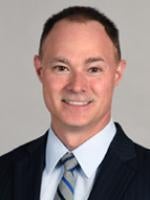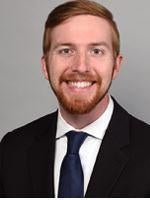The San Francisco Board of Supervisors and the San Jose City Council recently enacted emergency ordinances to expand employers’ obligations to provide paid sick leave to employees affected by COVID-19 beyond the requirements set forth in the Federal Families First Coronavirus Response Act (FFCRA). The FFCRA, for example, exempts employers who employed 500 or more employees and certain small businesses with 50 or fewer employees from its requirements to provide emergency paid sick leave to employees affected by COVID-19. These ordinances, however, remove the FFCRA’s exemptions for certain large and small businesses that operate within these jurisdictions. This alert summarizes each ordinance below.
San Francisco
On April 17, 2020, the San Francisco Board of Supervisors implemented an emergency ordinance to provide an additional two weeks of paid sick leave for employees to use during the COVID-19 public health emergency. The Public Health Emergency Leave Ordinance (PHELO) applies to businesses that: (i) employ 500 or more employees; (ii) employ workers who perform work within the City and County of San Francisco; and (iii) are not required to comply with the FFCRA. PHELO will expire either 61 days following its enactment (unless reenacted) or when the San Francisco public health emergency is terminated, whichever occurs first.
PHELO defines which employees can receive supplemental sick-leave pay and the amounts of sick leave they can receive. San Francisco construes “employee” broadly as any employee—full-time, part-time, or temporary—who worked 56 or more hours within the geographic boundaries of San Francisco during the 365 days immediately preceding the effective date of the ordinance [1].
The amount of leave an employee can receive under PHELO depends on whether the employee worked full-time or part-time as of February 25, 2020. PHELO entitles an employee who worked full-time as of 25 February 2020 to 80 hours of paid sick leave. PHELO entitles an employee who worked part-time as of 25 February 2020 to paid sick leave equal to the average number of hours that the employer scheduled the employee to work over two weeks during the six month period prior to 25 February 2020 [2].
PHELO specifies several scenarios in which employees can use their supplemental sick-leave pay. Covered employees may use PHELO leave benefits if the employee is unable to work or telework because the employee is:
- subject to quarantine or isolation by federal, state, or local order due to COVID-19, or is caring for a family member [3] who is quarantined or isolated due to COVID-19. (This scenario also includes an employee who is a member of a vulnerable or high-risk population and who is therefore unable to work as recommended by San Francisco Public Health Orders, Executive Orders of the Governor, or orders of other Bay Area jurisdictions);
- advised by a health-care provider to self-quarantine due to COVID-19 or is caring for a family member who is so advised by a health care provider;
- experiencing symptoms of COVID-19 and is seeking medical diagnosis or is caring for a family member who is experiencing symptoms of COVID-19;
- caring for a minor child due to a school or daycare closure related to COVID-19; or
- experiencing any other substantially similar condition specified by the Local Health Officer or under FFCRA section 5102(a)(6), by the United States Secretary of Health and Human Services.
PHELO, however, permits employers of health care providers or emergency responders, as defined under the FFCRA, to limit an affected employee’s use of PHELO to either of the following scenarios: (i) the employee has been advised by a health care provider (as that term is defined in 29 C.F.R. § 825.102) to self-quarantine; or (ii) the employee is experiencing symptoms associated with COVID-19, is seeking a medical diagnosis, and does not meet the Centers for Disease Control and Prevention guidance for criteria to return to work for healthcare personnel with confirmed or suspected COVID-19.
PHELO provides several formulas for calculating the amount of sick-leave pay owed to employees affected by COVID-19. Under PHELO, non-exempt employees must be paid using the regular rate of pay for the workweek in which the employee uses the leave, whether or not the employee works overtime in that week. Alternatively, the employer may calculate the rate of pay by dividing the employee’s total wages, not including overtime premium pay, by the employee’s total hours worked in the full pay periods of the prior 90 days of employment. The rate of pay for exempt employees must be calculated in the same manner as the employer calculates wages for other forms of paid leave time.
PHELO restricts employers from taking certain actions to dilute the new paid sick-leave requirements, including preventing employers from combining these benefits with other sick-leave policies. Employers must make PHELO available to employees in addition to any paid time off that an employer offered or provided to employees on or before 17 April 2020 (including paid sick leave required under the San Francisco Paid Sick Leave Ordinance [4]). Employers also cannot modify their paid time off policies during the pendency of the emergency ordinance (unless to provide additional paid leave). PHELO also prohibits employers from requiring employees to use other accrued time off before using this supplemental leave.
Additionally, PHELO imposes notice requirements on employers regarding these new paid sick-leave benefits. Employers must provide the San Francisco Office of Labor Standards Enforcement (OLSE) PHELO notice to its employees (available here). To ensure that the notice can be reached by all employees, employers should post the notice in a conspicuous place at the work site, disseminate via email or the employer’s web-based or app-based platforms, and provide the notice in English, Spanish, Chinese, and any language spoken by at least 5% of the employees. Furthermore, to the extent feasible, PHELO requires employers to set forth the amount of PHELO leave that is available to each employee [5]. Employers may provide the PHELO balance either on the employee’s itemized wage statement or in a separate writing provided on the designated pay date with the employee’s payment of wages [6].
PHELO also clarifies the circumstances in which businesses must provide leave to workers who are no longer working. PHELO still requires businesses that have temporarily closed or suspended operations to provide leave to employees. PHELO also requires employers to permit employees to use the supplemental leave for hours they are not scheduled to work. Furthermore, PHELO prohibits employers from conditioning leave upon employees finding replacement workers. Upon an employee’s separation from employment, PHELO does not require an employer to provide or pay for any PHELO leave not used prior to separation [7].
San Jose
San Jose also implemented an emergency ordinance to provide an additional two weeks of paid sick leave for employees to use during the COVID-19 public health emergency. The City of San Jose Urgency Ordinance No. 30390 (San Jose Ordinance) requires Essential Businesses [8] that either are located in San Jose or have employees performing work within the City’s geographic boundaries to provide up to 80 hours of paid sick leave to their employees. The San Jose Ordinance is effective from 7 April 2020 through 31 December 2020.
The San Jose Ordinance explicitly states that “the intent of this Ordinance is that it apply to [otherwise exempt] Employer[s] only to the extent of the benefit not provided under the [FFCRA].” The San Jose Ordinance, therefore, does not only impose new requirements on employers with over 500 employees as PHELO does, but it also removes the FFCRA’s exemption for certain small businesses with 50 or fewer employees. The San Jose Ordinance exempts two categories of employers from its requirements, however: (1) any employer that provides its employees with some combination of paid personal leave at least equivalent to the paid sick time required by the San Jose Ordinance, and (2) an employer who operates a hospital if the employer provides some combination of paid personal leave at least equivalent to the paid sick time required by the San Jose Ordinance.
The San Jose Ordinance explicitly defines the employees who qualify for the supplemental sick leave and the scenarios in which qualifying employees can use the supplemental sick leave. Qualifying employees must have worked for the employer for at least two (2) hours within the geographic boundaries of San Jose and must be employees who leave their own residence to perform “essential work” for the employer. Employees who are able to work from home do not qualify for the supplemental paid sick leave. As long as the employee meets all other requirements of the San Jose Ordinance, eligible employees do not have to be San Jose residents. Furthermore, provided that the employee meets all other requirements of the ordinance, the City’s Office of Equality Assurance has stated that it will process and investigate claims without regard to an employee’s immigration status.
A qualifying employee can then use the paid sick leave in one of the following scenarios:
- the employee is subject to a federal, state, or local quarantine or isolation order related to COVID19;
- the employee has been advised by a health care provider to self-quarantine due to concerns related to COVID-19;
- the employee is experiencing symptoms of COVID-19 and seeking a medical diagnosis; or
- the employee is caring for an individual who either is subject to a quarantine or isolation order related to COVID-19 or has been advised by a health care provider to self-quarantine due to concerns related to COVID-19.
The San Jose Ordinance provides employers with calculations for determining an affected employee’s supplemental sick-leave pay. The San Jose Ordinance entitles full-time employees to 80 hours of leave. Part-time employees are entitled to paid sick leave equivalent to the average number of hours worked over a two week period. The San Jose Ordinance instructs employers to calculate the weekly average by using the hours the employee worked per week between 8 October 2019 and 7 April 2020 [9]. If an eligible employee has worked less than six months, however, then the employer should use the average hours the employer expected at the time of hire.
The San Jose Ordinance imposes a cap on the amount of pay owed to affected employees depending on the COVID-19 scenario invoked:
- If an employee uses paid sick leave for the employee’s own care, the employee must be paid at least the employee’s regular rate of pay up to $511.00 per day, not to exceed an of $5,110.00 for two (2) weeks.
- If an employee uses paid sick leave to care for another person, the employee must be paid at least two-thirds (2/3) of the employee’s regular pay up to $200.00 per day, not to exceed an $2,000.00 for two (2) weeks.
The San Jose Ordinance imposes several additional requirements on employers. The San Jose Ordinance prohibits employers from conditioning this supplemental sick leave upon employees finding replacement workers. Additionally, it requires businesses to maintain and provide the following documentation:
- The name of the employee requesting leave;
- The date(s) for which leave is requested;
- The reason for leave; and
- A statement from the employee that he or she is unable to work because of the reason.





 />i
/>i

